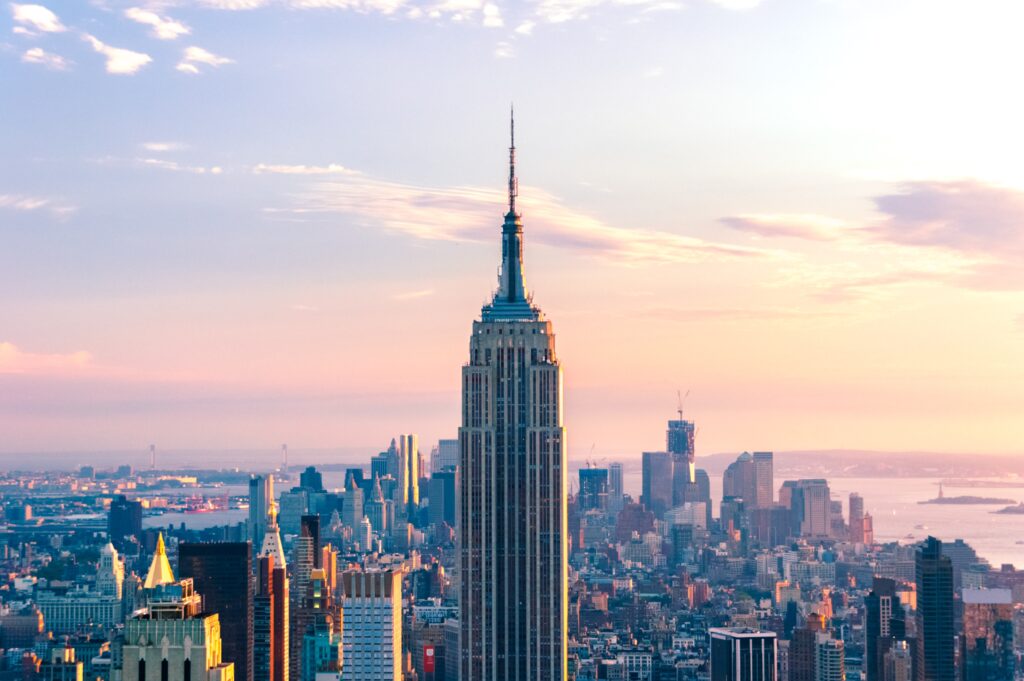Across the globe, sustainable construction is on the rise, with new technologies and innovative materials blending with older techniques and knowledge to fuel a surge in both new builds and renovations. From tiny homes to giant skyscrapers, the sustainable building movement aims to reduce some of the 36% of final energy use and 39% of energy and process-related carbon dioxide (CO2) emissions associated with the construction industry, as well as create less waste and use resources more efficiently.
Supporting these efforts is a range of green building assessment systems, evaluating and grading the success of all types of project, and leading the way is the USGBC’s LEED certification. But how exactly is LEED changing the face of the construction industry? In this article, we look at 8 of the most impressive and iconic examples of LEED projects in the US and Canada to help you understand how LEED buildings are paving a way to a more sustainable future.
What Is the Meaning Of LEED?
LEED (Leadership in Energy and Environmental Design) is the most widely used green building rating system in the world, transforming the way buildings are designed to make them more efficient, healthier to live in, and more sustainable. The framework was developed and by the USGBC (United States Green Building Council) and it aims to measure and monitor the design, construction, operation, and maintenance of environmentally sustainable buildings.
It does this by providing a broad range of goals across 8 categories, which are as follows:
- Innovation & Design Process Locations & Linkages
- Sustainable Sites
- Water Efficiency
- Energy & Atmosphere
- Materials & Resources
- Indoor Environmental Quality
- Awareness & Education
How Does a Building Get A LEED Certification?
Any construction project that wishes to gain LEED certification must first register an application with the USGBC. After the necessary documentation and fees have been submitted, the appropriate LEED rating system needs to be selected, such as such as LEED for New Construction or LEED for Existing Buildings, with goals and strategies defined in line with the specific rating system. Projects can choose which level of certification they wish to aim for earn credits across various criteria. The LEED certification levels are as follow:
- Certified: 40-49 points
- Silver: 50-59 points
- Gold: 60-79 points
- Platinum: More than 80 points
Once the project successfully meets all the requirements and earns the necessary points it is reviewed and verified, at which point the relevant certificate is awarded.
Top 8 LEED-Certified Buildings in The US And Canada
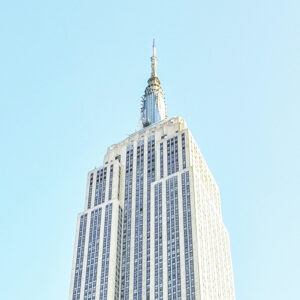
1. Empire State Building – New York City, New York
Considering construction was completed in 1931, you’d be forgiven for questioning the inclusion of New York’s most iconic skyscraper in this list, but the Empire State Building was in fact awarded LEED Gold certification back in 2011 after major renovations and energy efficient retrofits. The new sustainable design systems guaranteed a massive 38% reduction in energy consumption and savings of around $4.4 million in costs annually.
In addition, the ultra-low-flow water fixtures, use of eco-friendly cleaning supplies, and a tenant engagement program that has introduced mandatory green lease requirements have helped the Empire State Building operate more efficiently. Finally, the 42nd floor has also been awarded LEED Platinum certification for Commercial Interiors, acting as a flagship example of how the building can continue working towards and even more sustainable future.
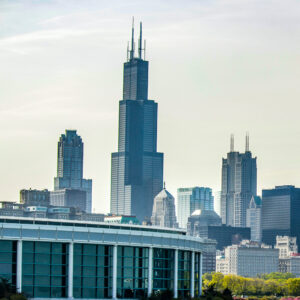
2. Willis Tower – Chicago, Illinois
In 2019, the Willis Tower (formally the Sears Tower) in Chicago was awarded Platinum certification by the USGBC, becoming the largest building in the US to the achieve top level accreditation under the latest LEED v4.1 rating system. Standing at 442.3 meters tall, it dominates the Chicago skyline, and is a prime example of how the LEED system can be successfully implemented within existing buildings.
Originally constructed in 1973, Willis Tower began retrofitting sustainable systems over a five-year renovation period in 2017. They include building automation systems with high-efficiency lighting, HVAC exhaust systems, chiller modernization, expansive low-flow plumbing fixture upgrades, rooftop greenspace, and comprehensive monitoring systems to track annual performance. Taken together, these upgrades ensure the budling operates sustainably both now and in the future.
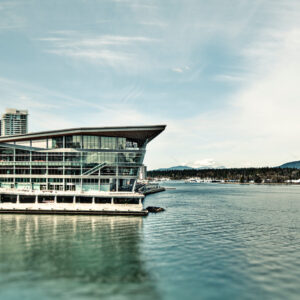
3. Vancouver Convention Center – Vancouver, Canada
The Vancouver Convention Center is situated across two sprawling sites on the city’s coast, and it’s the West building, completed in 2009, that’s of most interest. Featuring a six-acre living roof, a restored marine habitat built into the foundations, a black water treatment plant that recycles grey and black for toilet flushing, and a seawater heating and cooling system, the West building is bursting with innovative and sustainable tech.
LEED Platinum certified (version 4.1) for Building Operations and Maintenance in 2022 (West building), the Vancouver Convention Center also provides facility-wide recycling program that includes organics and uses Green SealTM and EcoLogoTM approved cleaning products.
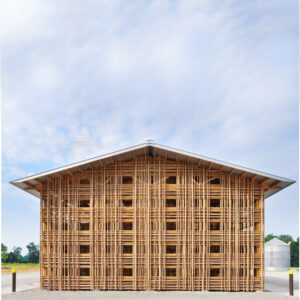
Source: archdaily.com
4. Mason Lane Farm – Goshen, Kentucky
While a hay shed might not necessarily conjure up images of impressive LEED-accredited buildings, this particular example is clad in a lattice grid of locally harvested bamboo, making it a unique addition to this list. Mason Lane Farm in Goshen, Kentucky, also features passive heating and cooling systems, and was constructed using up to 49% recycled materials. Barn B, as it is known on the farm, was awarded LEED Silver certification in 2010.
Aside from the building itself, the surrounding landscape also has a part to play in the structure’s accreditation, featuring locally sourced decomposed granite gravel, local limestone retaining walls, zero-irrigation plants and the introduction of a rain garden to act as a stormwater retention basin.
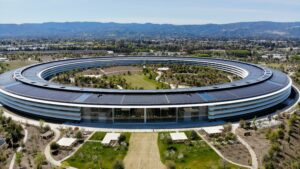
5. Apple Park – Cupertino, California
Apple’s iconic Campus 2 was opened to workers in 2017, however, from its earliest beginnings in 2006, architects and designers were aiming for the highest levels of sustainability. As of 2019, Apple Park was awarded Platinum LEED accreditation, signaling that even the largest structures are capable of delivering impressive sustainability credentials.
Apple Park is one of the world’s largest naturally ventilated buildings, using louvers integrated into the façade to draw in fresh air. Considering the building is larger even than the Pentagon, it’s also extremely impressive that its powered exclusively by 100% renewable energy, with a 14-megawatt rooftop solar installation and 4-megawatt bank of biogas fuel cells. Finally, with more than 9000 drought tolerant trees that use recycled water used for irrigation, the landscaping of Apple Park (accounting for around 80% of the campus) is also made for sustainability.
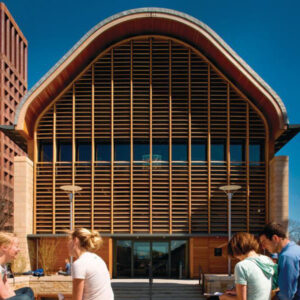
Source: architectmagazine.com
6. Yale School of the Environment – New Haven, Connecticut
Not so much a single building as an entire campus of LEED accredited structures, the Yale School of the Environment boasts an impressive set of green credentials. Kroon Hall features a 100-kilowatt solar panel array, a graywater system to capture rainwater, and a passive ventilation system that circulates conditioned air through perforations in the floor. It was awarded Platinum certification in 2010, while the Loria Center and Rudolph Hall, the Malone Center, the Yale Health Center, and many others are Gold certified.
Perhaps most impressively, however, is the Sculpture Building on Edgewood Avenue, the first building in Connecticut to receive Platinum certification. Sited to maximize the amount of natural light available, with external shading on the south and east facades, alongside a comprehensive stormwater reuse system that recycles water for toilet flushing and landscape irrigation, the Sculpture Building’s simple, squat construction belies its sustainable heart.
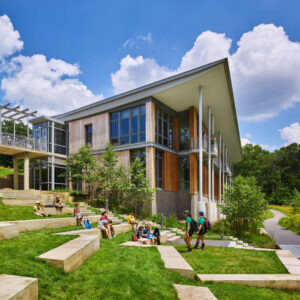
Source: pittsburghparks.org
7. Frick Environmental Center – Pittsburgh, Pennsylvania
As the gateway to Frick Park, the Frick Environmental Center in Pittsburgh already had its landscaping sorted, however, designing a building that not only complemented its surroundings but also gave back to the park was a challenge that the Pittsburgh Parks Conservancy and the City of Pittsburgh couldn’t resist.
Using solar panels and geothermal wells for heating and cooling, the Frick Environmental Center was also designed to use 40% less energy than a comparably sized building in the region. In addition, recycled or locally produced materials were used throughout the construction, with rainwater used in the building, and storm water gradually returned to the park through a series of wetlands.
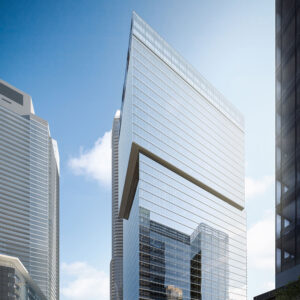
Source: 16york.ca
8. 16 York – Toronto, Canada
Another skyscraper, this time in the heart of Toronto, Canada, 16 York was designed to exceed LEED Platinum standards and is currently under review by the USGBC for LEED Platinum Core & Shell certification. Featuring floor to ceiling glazing on each floor for optimal
natural light, high-performance HVAC systems for increased indoor environmental quality, bicycle storage and electric vehicle charging, plus its own renewable power source, 16 York aims to set the standard for new builds in Canadas largest cities.
16 York is also directly linked to Toronto’s 30 km underground pedestrian PATH, allowing commuters and shoppers safe access by car, bike, and foot, contributing to the reduction of inner-city traffic. Finally, the tower also features a one-acre green roof that provides a habit for insects within the city.
For more information on LEED, including a LEED certification checklist, and how it is revolutionizing the construction industry, explore the RTS blog today.
Additionally, for information on how better waste management can help your building work towards LEED certification, contact us to arrange a free waste assessment.

